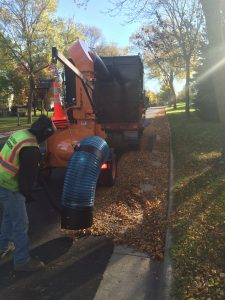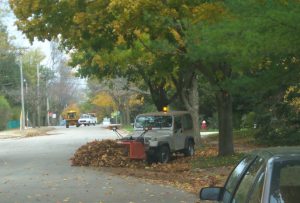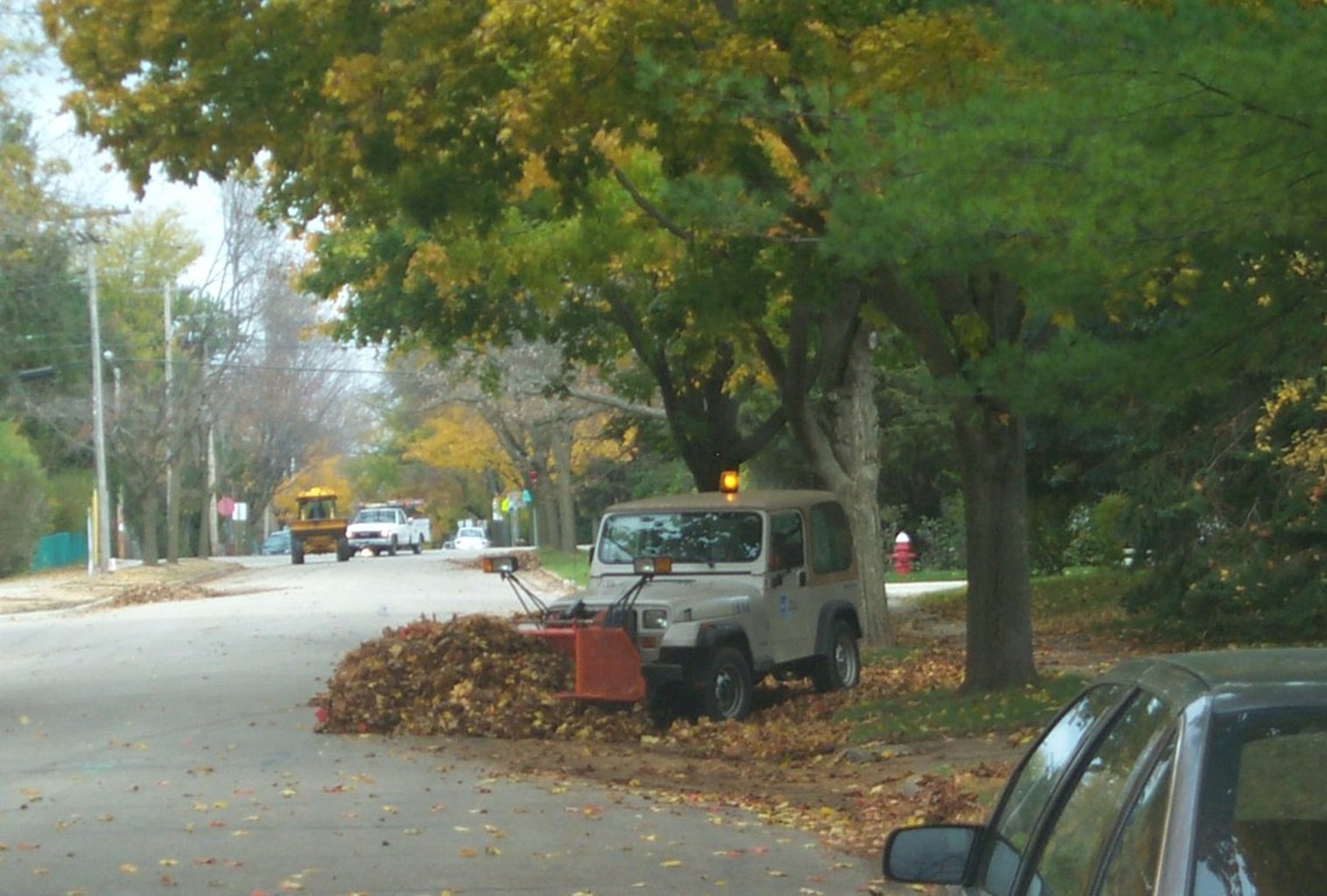
The city of Madison used municipal leaf collection, street cleaning, and leaf blowers to remove leaf litter from residential areas, and asked residents to pile their leaves adjacent to the street to limit excess debris.
Photo Credit: Bill Selbig/USGS
The timely removal of leaf litter can reduce harmful phosphorus concentrations in stormwater by more than 80% in Madison, Wis., according to a recent U.S. Geological Survey (USGS) study. Autumn leaf litter contributes a significant amount of phosphorus to urban stormwater, the study found.
The USGS-led study, Evaluation of Leaf Removal as a Means To Reduce Nutrient Concentrations and Loads in Urban Stormwater, found that without removal, leaf litter and other organic debris in the fall contributed 56% of the annual total phosphorus load in urban stormwater compared to only 16% when streets were cleared of leaves prior to a rain event.
“Our study found that leaf removal is one of the few treatment options available to environmental managers for reducing the amount of dissolved nutrients in stormwater,” said Bill Selbig, a USGS scientist and the author of the report. “These findings are applicable to any city that is required to reduce phosphorus loads from urban areas.”
Study also suggests proper timing

The timely removal of leaf litter can reduce harmful phosphorus concentrations in stormwater by more than 80% in Madison, Wisconsin. Autumn leaf litter contributes a significant amount of phosphorus to urban stormwater.
A USGS-led study found that without removal, leaf litter, and other organic debris in the fall contributed 56% of the annual total phosphorus load in urban stormwater compared to only 16% when streets were cleared of leaves prior to a rain event.
Photo Credit: Bill Selbig/USGS
From April until November of 2013 through 2015, scientists compared concentrations of phosphorus and nitrogen in stormwater from two residential catchments in western Madison that had similar tree cover. The city applied a leaf litter removal program from late September through mid-November at one site, but not the other. The researchers found significantly lower amounts of phosphorus and nitrogen at the site where leaves were removed.
The study also found that stormwater nutrient levels were highest during the fall months when the amount of organic debris on streets was at its peak. This finding suggests that leaf removal programs are most effective during fall in Madison, and that sources other than leaves, such as street dirt and grass clippings, were likely the primary contributors of phosphorus and other nutrients during spring and summer.
“The efficiency, frequency, and timing of leaf removal and street cleaning are the primary factors to consider when developing a leaf management program,” Selbig said.
During the study period, the city of Madison used municipal leaf collection, street cleaning and leaf blowers to remove leaf litter from residential areas, and asked residents to pile their leaves adjacent to the street to limit excess debris. Leaf collection and street cleaning occurred about every 7 days from late September through mid-November.
The USGS collaborated with the City of Madison, the Fund for Lake Michigan and the Wisconsin Department of Natural Resources on the study.
For more information about Wisconsin water research, please visit the USGS Wisconsin Water Science Center website.





